Shiitake: discover its properties
2 years ago · Updated 6 months ago
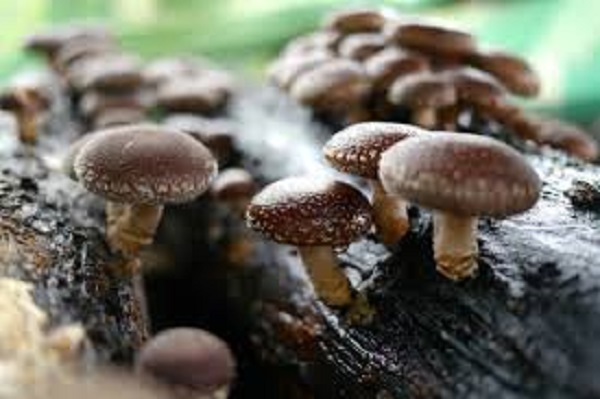
It is the most widely consumed edible mushroom in the world and one of the most beneficial to our health.
This text is for informational purposes only and should not be considered a substitute for professional medical advice. Before making any changes to your diet or lifestyle, it is recommended that you consult a qualified healthcare professional. Similarly, it is important to note that research on the potential benefits of medicinal mushrooms is limited and further research is ongoing to fully understand their effects on the human body.
This mushroom is delicious and is certainly the most widely consumed edible mushroom in the world, especially in Asia.
Would you like to buy shiitake mushrooms for cooking? We recommend our section of gourmet products made with these mushrooms with excellent properties. Enjoy the intense flavor of Shiitake, which you can find dehydrated, sliced or whole, in flour, liqueur, preserves, risotto, and more. It's delicious!
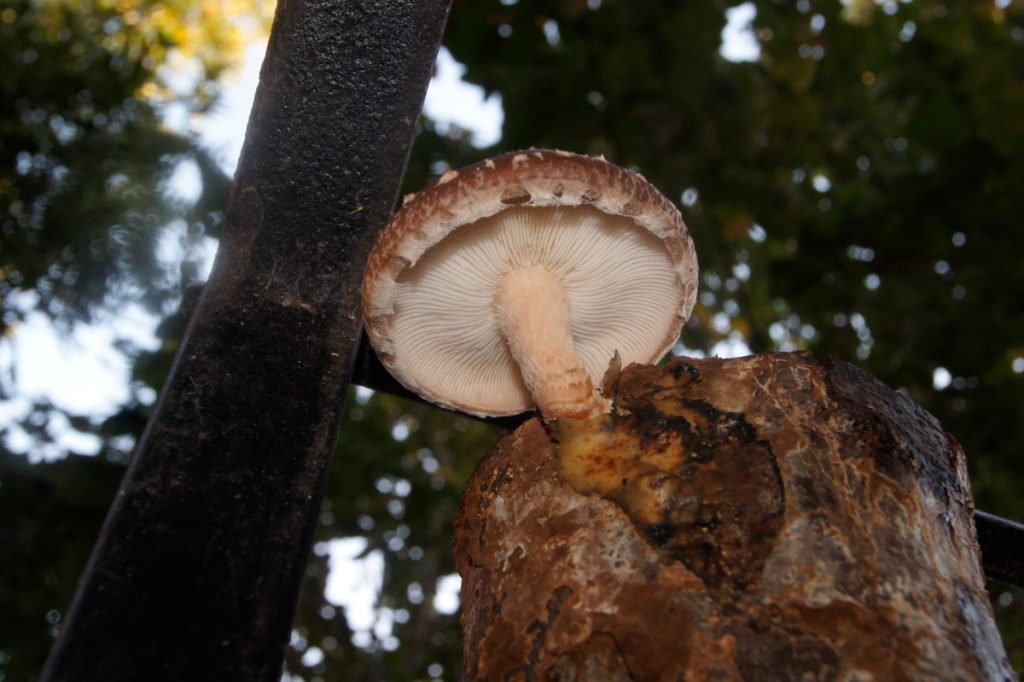
- How is shiitake known?
- Shiitake: The Chinese mushroom that strengthens the immune system
- What is shiitake?
- Shiitake properties and characteristics
- THERAPEUTIC ACTIONSDEMONSTRATED WITH THE USE OF SHIITAKE MUSHROOMS
- Medicinal properties of shiitake
- Shiitake mushroom is very effective against hyperuricemia and gout.
- Shiitake mushrooms in cooking. Consumption and culinary uses
- Growing shiitake mushrooms
How is shiitake known?
Shii take (Japanese name)
Xianggu or Hoang-Mo (Chinese name)
Shiitake (common name, in English and Spanish)
Scientific name: Lentinus edodes (or Lentinula edodes)
Shiitake: The Chinese mushroom that strengthens the immune system
Shiitake is a mushroom of Asian origin that is highly prized in gastronomy for its intense aroma and flavor. In addition to its culinary uses, shiitake also has medicinal properties such as strengthening the immune system and reducing cholesterol levels.
It can be grown on natural and synthetic substrates and is available fresh, frozen, or dried. Global production of shiitake is concentrated in countries such as China and Japan. Learn more about this mushroom that is so popular around the world.
What is shiitake?
Shiitake is a type of mushroom native to East Asia that has become popular around the world for its delicious taste and aroma. The mushroom has been cultivated in Japan and China for centuries and is used in both cooking and traditional medicine due to its many nutritional and medicinal properties.
Origins and names
Shiitake, which gets its scientific name Lentinula edodes, is an edible mushroom that grows on the wood of certain trees, such as oak, beech, and chestnut. Shiitake is native to East Asia and has been cultivated in China and Japan for over a thousand years.
Shiitake mushrooms go by different names: in restaurants they are known as ‘Chinese mushrooms’, in Chinese they are known as ‘xiānggū’ and in Japanese they are known as ‘Castanopsis mushrooms’. They are also known as ‘winter mushrooms’ or ‘flower mushrooms’.
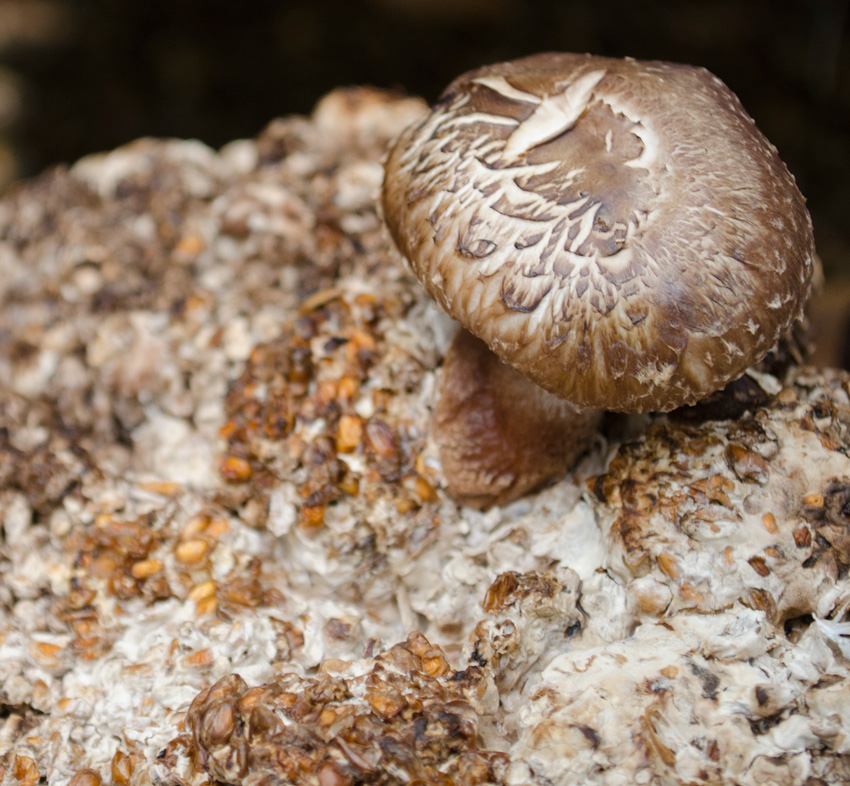
Shiitake properties and characteristics
It is an edible mushroom highly prized in China and Japan as a food, but even more so as a medicinal mushroom with therapeutic properties known since ancient times. Although its taste is more delicious and exotic than that of the button mushroom and it has more medicinal properties, it ranks second among the most consumed mushrooms in the world, behind the button mushroom.
Shiitake was probably the first mushroom to be cultivated around the year 200, i.e. about 2000 years ago.
Nutritionally, in addition to containing all the essential amino acids, it is notable for its relative abundance of iron, calcium, and zinc (although, according to experiments, the mineral content varies greatly depending on the mineral richness of the substrate on which the mycelium grows), B vitamins, vitamin E and provitamin D, unsaturated fatty acids and a large amount of polysaccharides, particularly lentinane, a pure polysaccharide (without amino acids). Furthermore, LEM is a proteoglycan with 25% protein
Shiitake. Therapeutic action according to TCM
Used against diseases caused by excessive cold: flu, bronchitis, colds, rhinitis and also against viral pathologies. It is considered a food that strengthens jing-qi, vital energy, and the Xie Qi system of resistance to external pathogens.
What are the main active effects of Shiitake?
- Lentinian stimulates macrophages, T lymphocytes, interferon synthesis and inhibits tumor growth.
- Contains erythadenine, an alkaloid that reduces serum cholesterol and has hypotensive effects.
- In addition to various polysaccharides and proteoglycans, it contains a significant amount of provitamin D, which has antiviral and immunoregulatory effects.
- This mushroom is also rich in trehalose, a disaccharide that is slowly digested and promotes the development of Bifidobacteria breve and Lactobacillus brevis in the colon, improving intestinal flora.

THERAPEUTIC ACTIONSDEMONSTRATED WITH THE USE OF SHIITAKE MUSHROOMS
The antitumor action of lentinane is not direct but strengthens the immune system through the activity of macrophages, which is of particular importance in the elimination of possible metastases. Extracts of the mushroom obtained with chloroform have demonstrated antiangiogenic activity on laboratory bird tissue.
Main characteristics of the mushroom
The shiitake mushroom is a medium to large mushroom with a fan-shaped cap and a short stem. The cap of the shiitake can vary from brown to dark brown in color and has a velvety texture. The mushroom can grow up to 15 centimeters wide and weigh up to 100 grams. Due to its attractive appearance, delicious aroma, and unique texture, it has become a popular ingredient worldwide in a wide variety of dishes.
Medicinal properties of shiitake
Shiitake is valued not only for its flavor, but also for its extraordinary medicinal properties. It has components that can strengthen the immune system and protect the body from various diseases.
Possible anti-cancer effects
Scientists around the world are studying the anti-cancer properties of shiitake mushrooms. Certain components of the mushroom, including lentinan, are believed to have the ability to slow tumor growth. In addition, some animal studies suggest that shiitake may be effective in improving the body's response to certain types of cancer.
Skin and hair properties of shiitake mushrooms
Shiitake is also known for its skin and hair care properties. The mushroom contains kojic acid, a compound that helps whiten the skin and remove blemishes. In addition, shiitake is rich in minerals such as selenium, which contributes to skin regeneration and hair protection. Some skin and hair care products include shiitake extracts among their active ingredients.
Shiitake as an immune system booster
By increasing phagocytes, Th lymphocytes, NK cells, and complement C3 (which generates tumor cell-destroying anaphylatoxin). Increases peripheral mononuclear cells (PMNC). Increases interleukin I (lymphocyte activation factor) production and interferon production.
Lentinane itself has antiviral (HIV, influenza) and antibacterial (tuberculosis) properties.
Trials conducted in Japan on a disease called LNKS, which is identical to chronic fatigue syndrome, reversed the symptoms of fever, persistent fatigue, and low NK leukocyte activity.
The mushroom contains other polysaccharides with antiviral effects.
Very effective against herpes simplex virus I and II, polio virus, measles virus, and mumps virus.
Lipid-lowering action of erythadenine and choline contained in the mushroom.
Tested on laboratory mice, it reduced cholesterol and triglycerides in just one week.
Hypotensive.
The action of tyrosinase and erythadenine has a hypotensive effect through vascular dilation and relaxation of the vascular walls.
Liver protector.
Acts against hepatitis B and liver cancer.
Antithrombotic and blood-thinning effect
Erythadenine inhibits platelet aggregation.
Action against impotence and low libido.
A high percentage of erectile problems are related to vascular problems resulting from atherogenesis and a tendency to form clots. Given that the hypolipidemic effects of this mushroom are associated with hypotensive and antithrombotic effects, it is normal that it is attributed with aphrodisiac and libido-stimulating effects. Its stimulating effect on T lymphocytes generates the production of Vasoactive Intestinal Peptide, responsible for erection in men and arousal in women. This stimulation of T lymphocytes in turn activates the secretion of endorphins, TSH, and adrenaline, which contribute to a feeling of well-being.
Increased fertility and sexual activator.
In tests carried out on mice fed a diet enriched with shiitake, an increase in fertility and sexual activity was observed.
Its high zinc content inhibits the enzyme 5alpha-reductase.
It prevents the conversion of testosterone to dihydrotestosterone and protects the prostate from benign prostatic hyperplasia (BPH).
Shiitake mushroom is very effective against hyperuricemia and gout.
Its antifungal activity and high content of cellulase and hemicellulase enzymes make it an effective antifungal agent.
Several studies have shown that lentinane eliminates the bacteria responsible for dental plaque and the resulting tooth decay. It is particularly effective against Streptococcus mutans, the bacteria that dentists consider their worst enemy.
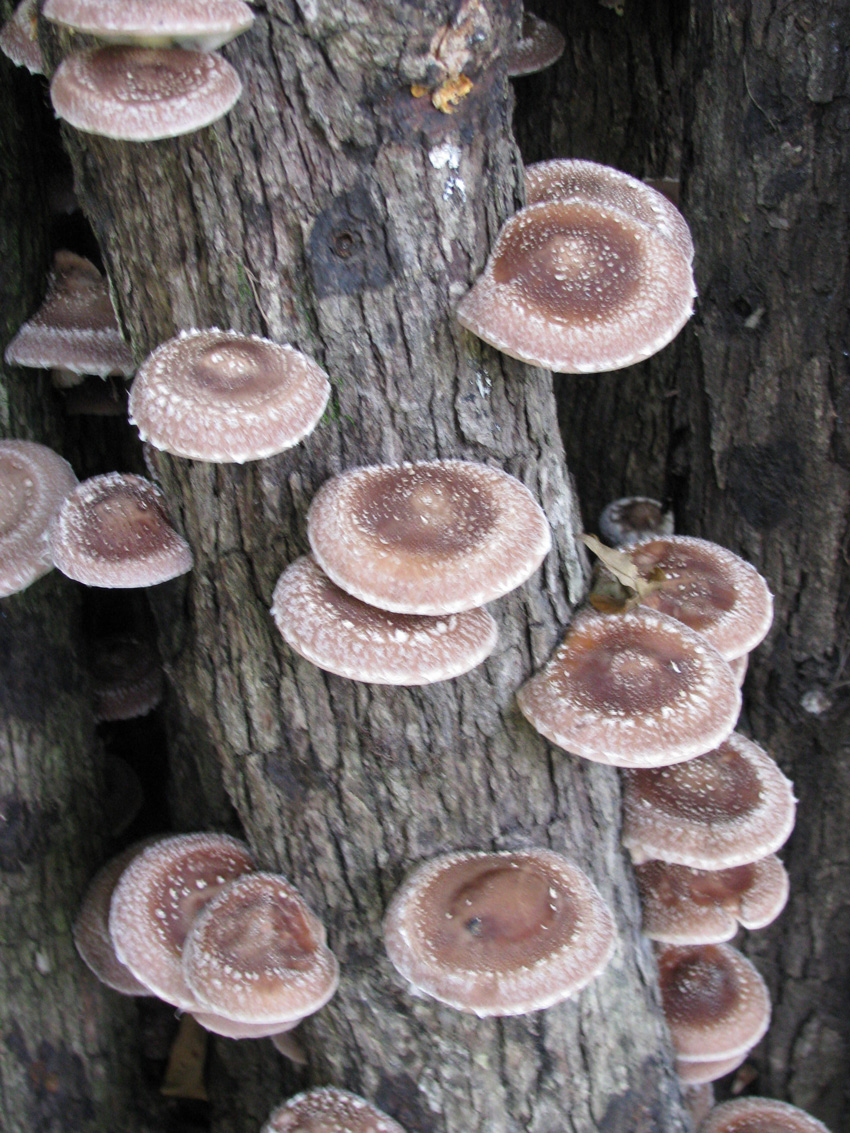
When is the use of Shiitake mushrooms recommended? What are Shiitake mushrooms used for?
The use of medicinal mushrooms is never a substitute for prescribed medical treatment. They are very beneficial when used in combination with medical treatment. Shiitake mushrooms are therefore recommended in the following cases:
- Weakened immune system Infections associated with bacteria and viruses
- Influenza and recurrent viral diseases of the respiratory tract Chronic bronchitis
- Infectious diseases of viral origin
- Candidiasis
- High blood pressure Hyperlipidemia Cholesterol Thrombosis Hepatitis B
- Cirrhosis
- Liver problems in general
- Gout
- Hyperuricemia
- Impotence and decreased libido
- Infertility
- Chronic fatigue syndrome
- Prostate problems (BPH)
- Dental plaque problems
- Frequent tooth decay
- Side effects of chemotherapy and radiotherapy (especially lymphedema) Anti-tumor, with a particular effect on:
- Cancer of:
- lung
- breast
- stomach
- pancreas
- liver
- prostate
- colorectal
- Leukemia
- Sarcoma
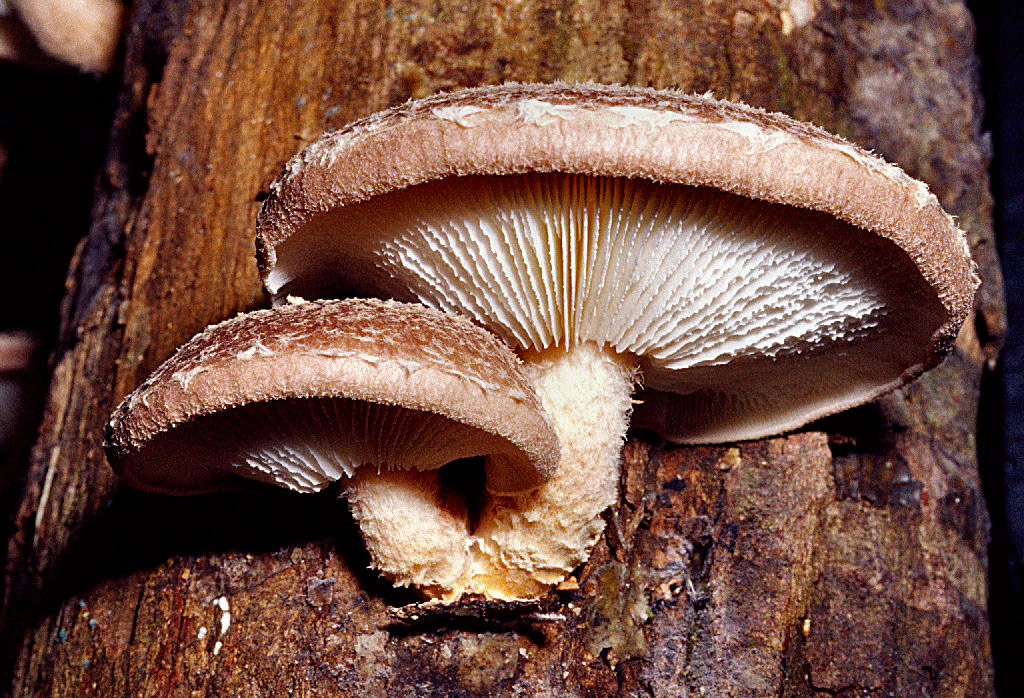
Shiitake mushrooms in cooking. Consumption and culinary uses
Shiitake mushrooms are highly prized in gastronomy for their flavor and aroma, making them an ideal ingredient in many recipes. Shiitake mushrooms can be found fresh, frozen, or dried in the market.
Shiitake mushrooms. Various ways of consumption
Shiitake mushrooms can be consumed in many ways, depending on how they are prepared and the region. In general, the most common ways of consumption are as follows:
- Sautéed with vegetables: this is a very typical preparation in Chinese cuisine, and either fresh or dried shiitake mushrooms can be used. Sautéed shiitake mushrooms with other vegetables can be served as a side dish or as a main course.
- Stews and casseroles: shiitake mushrooms can be added to stews and casseroles to enhance their flavor and aroma.
- Soup: shiitake soup is a very popular dish in Japan. Shiitake mushrooms are cooked in a fish broth with other ingredients such as miso, tofu, onion, and noodles.
- Salads: shiitake mushrooms can also be used in salads, mainly in their dehydrated form.
- Appetizers: Fried or tempura shiitake mushrooms are a very popular appetizer in Japan and China.
Use of L. edodes in global cuisine
Shiitake mushrooms are a very versatile ingredient and are used in the cuisine of several countries. In Asian cuisine, shiitake mushrooms are used in soups, stews, stir-fries, rice dishes, and sushi. In Europe, shiitake mushrooms are mainly used in stews and meat dishes. Shiitake has also been incorporated into fusion cuisine and haute cuisine.
Shiitake mushroom recipes
Shiitake is a mushroom that is highly valued in global cuisine and can be used in a variety of recipes to enhance flavor and aroma. There are many possibilities when it comes to cooking with shiitake. Below are some recipes featuring shiitake mushrooms:
- Beef stew with shiitake mushrooms: in this recipe, fresh shiitake mushrooms are added to a beef stew along with other ingredients such as carrots, onions, leeks, and tomatoes.
- Shiitake miso soup: this typical Japanese soup is made with fresh shiitake mushrooms, miso, tofu, onions, and seaweed.
- Chicken with shiitake mushrooms and asparagus: in this recipe, chicken breasts are sautéed with shiitake mushrooms and asparagus and served with a white wine and onion sauce.
- Shiitake risotto: this risotto uses dried shiitake mushrooms, which are cooked with rice, Parmesan cheese, white wine, and chicken broth.
- Quinoa with shiitake mushrooms and black onion: In this recipe, shiitake mushrooms are sautéed with black onion and mixed with pre-cooked quinoa.
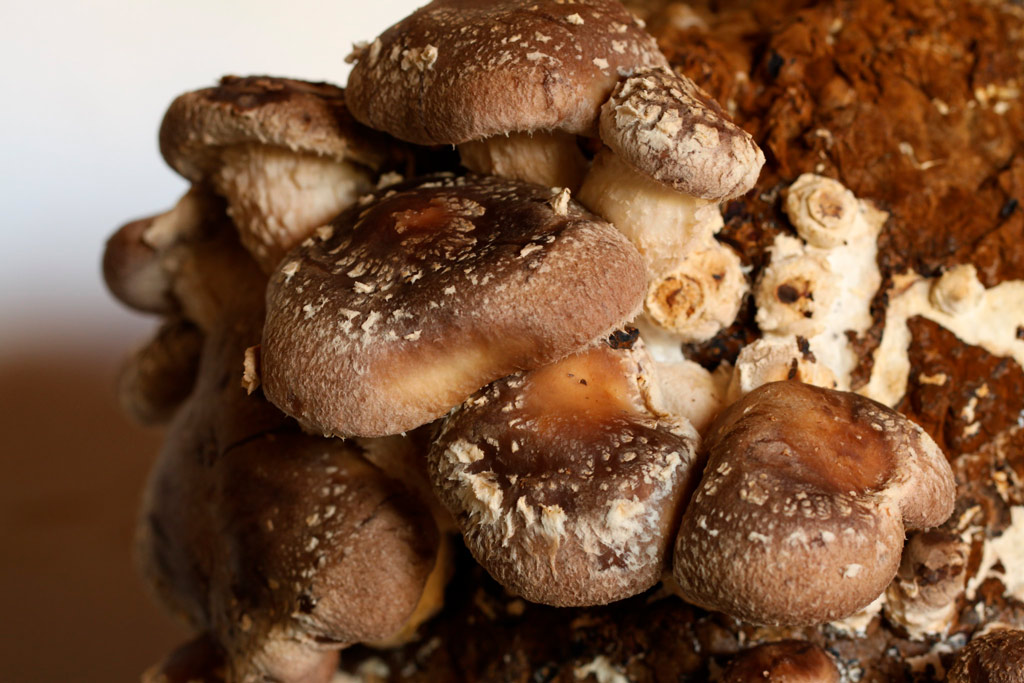
Growing shiitake mushrooms
Shiitake cultivation dates back many centuries in Asia, mainly in China and Japan, and has spread to other countries around the world. Mass production of shiitake mushrooms relies on controlled manipulation of temperature, humidity, light, and substrate.
Shiitake cultivation method
The traditional method for growing shiitake mushrooms is on hardwood logs. First, holes are drilled into the logs, the mushroom spores are inserted, and the holes are sealed to maintain humidity.
After 6 to 18 months, the mycelium will have colonized the log and will begin to produce mushrooms. Other techniques include cultivation on wood blocks, cultivation in bags with synthetic or natural substrates, and cultivation in environmentally controlled greenhouses.
World production and main producing countries
World production of shiitake is led by China, with nearly 80% of global production, followed by other Asian countries such as South Korea and Japan. Other countries such as the United States, Canada, and some European countries have begun to venture into shiitake production, although they are still far from reaching the production levels of Asian countries.
Results and benefits of shiitake cultivation
Shiitake cultivation is an economic activity that can generate significant profits. In addition, as it is an edible mushroom with nutritional and medicinal properties, shiitake cultivation can offer multiple benefits. On the one hand, it promotes healthy and sustainable consumption, and on the other hand, it can be a significant source of income for both small farmers and large food production companies. In addition, its cultivation contributes to job creation and the development of local communities.
This text is for informational purposes only and should not be considered a substitute for professional medical advice. Before making any changes to your diet or lifestyle, it is recommended that you consult a qualified healthcare professional. Similarly, it is important to note that research on the potential benefits of medicinal mushrooms is limited and that further research is ongoing to fully understand their effects on the human body.
Did you find this article helpful? Give us a like: -)

Te pueden interesar